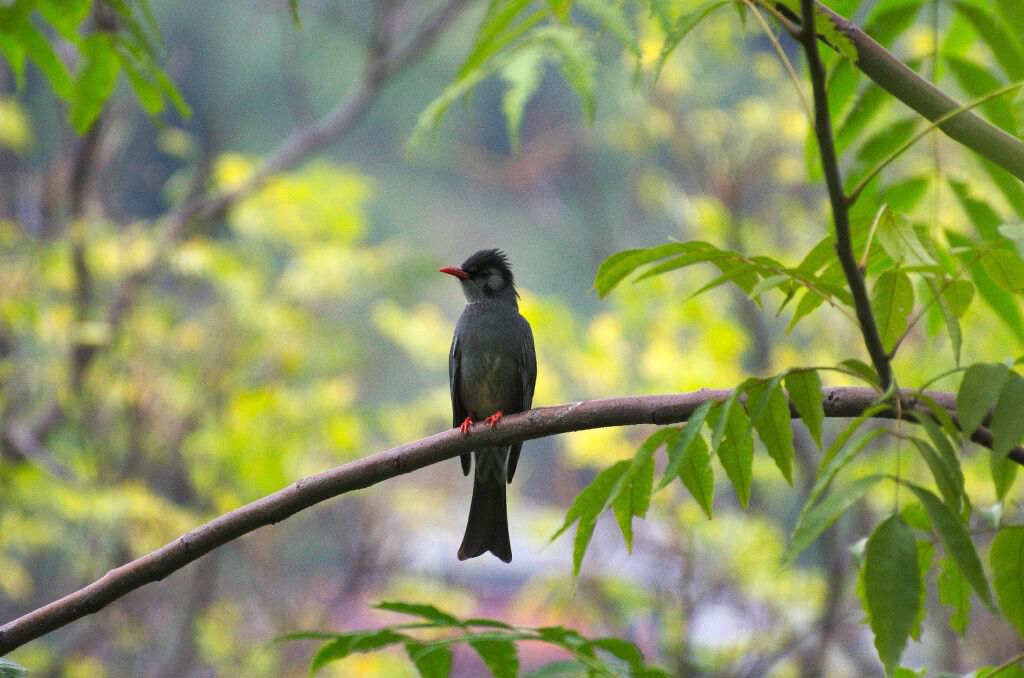
Hypsipetes leucocephalus (Black bulbul)
Hypsipetes leucocephalus, commonly called the Black Bulbul, is a striking bird found across the lush forests of the Great Himalayan National Park (GHNP). With its sleek black plumage, vibrant orange bill, and lively calls, Hypsipetes leucocephalus is a notable member of GHNP’s diverse avian community. Its energetic behavior and loud, musical calls often draw the attention of trekkers and bird enthusiasts wandering through the park’s temperate forests.
The presence of the Black Bulbul highlights the park’s healthy ecosystem, especially in areas rich in fruiting trees and dense foliage.
Habitat and Distribution in GHNP
In the Great Himalayan National Park, the Black Bulbul primarily inhabits broadleaf forests, riverine woodlands, and scrubby hillsides between 1,000 and 2,700 meters elevation. It is commonly spotted along sunny edges of forests and near villages bordering the park.
Hypsipetes leucocephalus often forms noisy flocks, especially outside the breeding season, moving rapidly through tree canopies in search of food. During spring and summer, pairs become territorial, establishing nesting sites high in trees where they are safe from predators.
The Sainj and Tirthan valleys within GHNP offer excellent opportunities to observe these dynamic birds, particularly where fruiting trees are abundant.
Behavior and Diet
The diet of Hypsipetes leucocephalus mainly consists of fruits, berries, and nectar, although it also consumes insects during the breeding season. It plays a vital role in seed dispersal, helping maintain forest regeneration across GHNP’s varied landscapes.
Highly vocal, Black Bulbuls produce a variety of melodious whistles, harsh calls, and chatter, especially during morning and late afternoon. Their aerial acrobatics, including swift dives and short glides between treetops, make them entertaining to watch.
Conservation Significance
Currently listed as a species of Least Concern, Hypsipetes leucocephalus benefits from the well-preserved habitats within GHNP. Its reliance on healthy fruiting forests underlines the importance of protecting the park’s native vegetation from invasive species and habitat degradation.
Monitoring the population dynamics of the Black Bulbul provides insights into the health of mid-elevation forests across the Himalayas.
| Common name | Black Bulbul |
| Scientific name | Hypsipetes leucocephalus |
| Family | Pycnonotidae (Bulbul) |
| Description | A slaty grey, black-crested bulbul with slightly forked tail and bright red bill and legs. Sexes alike. Resident, with local movements. Affects evergreen and moist-deciduous forest, hill station gardens, etc. Arboreal Noisy boisterous parties of 6 to 10, sometimes large flocks, in the foliage canopy of lofty forest trees, flying in rabbles from tree to tree, commonly keeping company with the mixed hunting flocks. Seldom descends to bushes. Often launches short twisting sallies from treetops to capture insects in the air. Food: Mainly fruits and berries; also insects and flower-nectar. |



